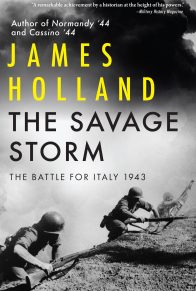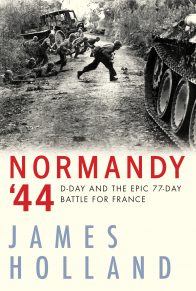About The Book
James Holland’s The Rise of Germany, the first volume in his War in the West trilogy, was widely praised for Holland’s impeccable research and narrative skills. With a wealth of characters from across the western theatre of World War II, Holland told a captivating story while calling on new research to challenge our assumptions and reframe our understanding of this momentous conflict.
As The Rise of Germany ended, the Nazi war machine looked to be unstoppable. Germany had taken Poland and France with shocking speed. London was bombed, and U-boats harried shipping on the Atlantic. But Germany hadn’t actually won the Battle of Britain or the Battle of the Atlantic, and was not producing airplanes or submarines fast enough. And what looked like victory in Greece and Crete had expended crucial resources in short supply.
In The Allies Strike Back, while Germany’s invasion of Russia unfolds in the east, in the west, the Americans formally enter the war. In North Africa, following major setbacks at the hands of Rommel, the Allies storm to victory. Meanwhile, the bombing of Germany escalates, aiming to destroy the Nazi military, industrial, and economic system, and relentlessly crush civilian morale. A captivating book by a supremely skilled historian, The Allies Strike Back is a perfect successor to The Rise of Germany.
Praise
A Military History Book Club Main Selection
An Amazon Best Book of the Month (History)
“Detailed, well-researched, and comprehensive . . . Holland makes a strong case . . . [He] shifts smoothly between high-level strategy and tactical battlefield events, producing a good refresher to the large strategic picture for those who are deeply read in WWII history and an excellent introduction to the war in Western Europe for the general reader.”—Publishers Weekly
“An illuminating read from a skilled historian . . . Holland delivers a detailed, opinionated account of fighting in North Africa, the Atlantic submarine campaign, and the air war while acknowledging (and often describing) the far larger war in Russia . . . Expert, anecdote-filled, thoroughly entertaining.”—Kirkus Reviews
“Holland puts the case for Allied technological and military skills as a vital factor in turning the war’s tide, and makes us eager for the third and final part of what now ranks as a towering work of historical research and writing.”—BBC History Magazine
“A well-researched, lively account.”—CHOICE
“Holland’s two greatest qualities, his engaging writing style and his ability to weave multiple threads into a convincing whole, are on display once more in this accessible and authoritative history . . . Holland, a successful fiction author as well, keeps his reader gripped with an engrossing tale, which both educates and entertains. In Holland’s own words this is ‘a truly epic and astonishing story’ and the same could be said for his book.”—History of War (UK)
“Holland shoots down the myth of German invincibility . . . All the great turning points of 1941–43 are here. A triumph”—Sunday Express (UK)
“Holland brings a fresh eye to the ebb and flow of the conflict . . . [A] majestic saga”—Literary Review (UK)
“This second volume easily reaches the benchmark set by its predecessor . . . The style is crisp, engaging, absorbing, it really does have the feel of a fresh and revisionist perspective on the momentous events that occurred between 1941 and 1943.”—Soldier (UK)
Excerpt
In the United States, the armaments revolution that Bill Knudsen had promised was now starting to bear fruit. Machine tools had been made, factories constructed, and a labor force employed. The tools had been provided and now American industry could get on with the job. This spirit of enterprise and manufacturing drive was being demonstrated in the huge factories at Detroit, or at Willow Run, the new Ford aircraft assembly plant in Michigan. It was also being put into practice at the new shipyards built by Henry Kaiser and his colleagues. Here, the principles of the assembly line were now being applied to shipbuilding. It had been originally estimated that it would take 220 days to build a liberty ship, but by the beginning of the year that figure had been slashed to 105 days. At Richmond, California, Kaiser’s partner Clay Bedford, had been reducing that time even further. At the same time, Kaiser’s son, Edgar, now running the shipyard at Portland, Oregon, was viewing Clay Bedford’s efforts as a personal challenge. In May, the Richmond yards built the James Whitcomb in seventy-three days.
Two months later, in July, Kaiser’s men at Portland sailed the Thomas Bailey Aldrich in just forty-three days. Then in August, Bedford’s men built a ship in a staggering twenty-four days. This was ship-building on a truly astonishing scale. No-one had ever believed in their wildest dreams that a 10,000-ton dry cargo weight merchant ship could be built in such a ridiculously short time. That record, however, would soon be beaten again. And again. How could the U-boats, with their still-failing torpedoes and lack of sufficient air cover possibly compete? The answer, of course, was that they could not.













